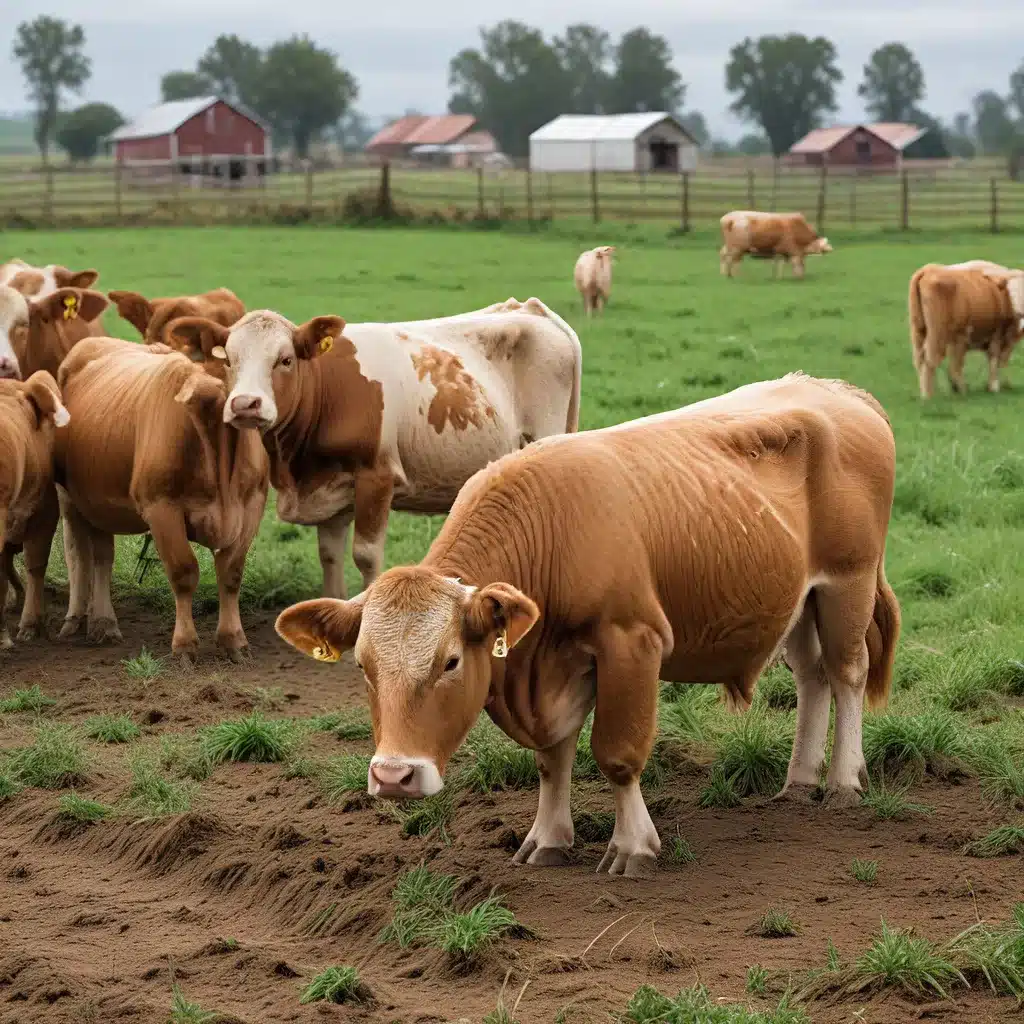
The Evolving Landscape of Sensor Networks in Precision Livestock Farming
Sensor networks have emerged as a transformative technology in the realm of precision livestock farming (PLF), offering unprecedented opportunities to enhance animal welfare, optimize productivity, and address the growing demand for sustainable agricultural practices. The integration of advanced sensor technologies with sophisticated data analytics and Internet of Things (IoT) frameworks has paved the way for a new era of intelligent, data-driven livestock management.
At the heart of this paradigm shift lies the ability to capture and analyze real-time data from a vast array of sensor nodes deployed within livestock facilities. These sensor networks can monitor a wide range of parameters, including animal health, behavior, environmental conditions, and resource utilization, providing farmers with a wealth of actionable insights to guide their decision-making processes.
Sensor-networks.org has been at the forefront of this revolution, offering comprehensive solutions and expertise to empower farmers and livestock producers with the latest advancements in sensor network technology.
Enhancing Animal Welfare through Sensor-driven Monitoring
One of the primary benefits of sensor networks in precision livestock farming is the enhanced monitoring of animal health and wellbeing. By strategically placing sensors throughout the livestock facilities, farmers can continuously track vital signs, behavioral patterns, and environmental conditions that directly impact the animals’ welfare.
Advancements in sensor technology have enabled the development of wearable devices that can be easily attached to individual animals, providing real-time data on parameters such as body temperature, heart rate, respiratory rate, and even activity levels. This granular monitoring allows farmers to detect early signs of illness or distress, enabling timely interventions and improved veterinary care.
Moreover, sensor-enabled environmental monitoring within livestock facilities can identify factors that may compromise animal welfare, such as excessive heat, humidity, or poor air quality. By proactively addressing these conditions, farmers can ensure that their animals are housed in optimal environments, promoting their overall health and wellbeing.
Boosting Productivity through Data-driven Insights
Alongside the focus on animal welfare, sensor networks in precision livestock farming have also demonstrated their ability to enhance productivity and operational efficiency. By collecting and analyzing data from various sensors, farmers can gain valuable insights into the feeding patterns, growth rates, and resource utilization of their livestock.
Precision feeding strategies, enabled by sensor-based monitoring of individual animal consumption, can optimize nutrient intake and minimize feed waste, ultimately improving the overall feed conversion ratio and reducing production costs.
Sensor-driven monitoring of livestock movement and behavior can also identify patterns that indicate optimal breeding and birthing times, as well as potential issues that may affect reproduction and growth. This data-driven approach empowers farmers to make informed decisions about herd management, enhancing productivity and maximizing their return on investment.
Addressing the Challenge of Energy Management in Sensor Networks
As the deployment of sensor networks in precision livestock farming continues to expand, the challenge of energy management has emerged as a critical consideration. Sensor nodes deployed in remote or off-grid livestock facilities must operate autonomously for extended periods, without the constant availability of grid power or frequent battery replacements.
To overcome this challenge, sensor network designers have explored innovative energy-efficient strategies and renewable energy sources. Low-power sensor designs, energy harvesting technologies, and advanced power management algorithms have all played a crucial role in ensuring the long-term sustainability and reliable operation of these sensor-driven systems.
The integration of solar panels, wind turbines, and other renewable energy sources has further enhanced the energy independence of sensor networks in precision livestock farming, reducing the reliance on traditional power grids and minimizing the environmental impact of these systems.
Securing the Sensor Network Infrastructure
As the adoption of sensor networks in precision livestock farming continues to grow, the importance of cybersecurity has become increasingly critical. Sensor nodes, gateways, and data communication channels within these networks are potential entry points for malicious actors, posing significant risks to data privacy, system integrity, and operational continuity**.
To address these security challenges, sensor network designers have implemented robust security protocols and encryption techniques to safeguard the integrity of data collected from sensor nodes. End-to-end encryption, secure authentication, and access control mechanisms are essential components of a comprehensive security strategy for precision livestock farming sensor networks.
Moreover, regular firmware updates, vulnerability assessments, and proactive monitoring of the sensor network infrastructure are crucial to maintaining a strong security posture and mitigating emerging threats over time.
The Future of Sensor Networks in Precision Livestock Farming
As the sensor network technology continues to evolve and mature, the potential for precision livestock farming to transform the agricultural landscape is truly exciting. Advancements in artificial intelligence and machine learning will enable more sophisticated data analytics, predictive modeling, and autonomous decision-making capabilities within these sensor-driven systems.
The integration of sensor networks with robotics and autonomous vehicles will further enhance the efficiency and precision of livestock management, automating tasks such as feeding, monitoring, and herd management. Augmented reality and virtual reality technologies could also revolutionize the way farmers interact with and visualize their livestock operations, providing immersive and intuitive interfaces for data-driven decision-making.
As the sensor-network revolution continues to unfold, the future of precision livestock farming holds the promise of improved animal welfare, enhanced productivity, and sustainable agricultural practices – all powered by the transformative capabilities of sensor networks and IoT technologies.